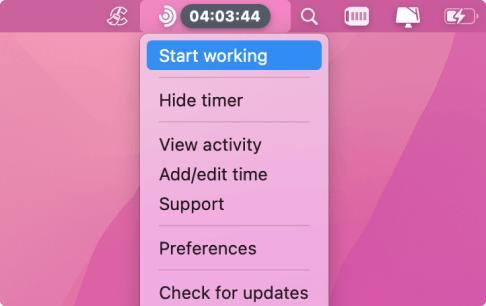
Countdown timers have emerged as one of the most powerful yet underutilized tools in the productivity arsenal. Although timers have been around for ages, in one form or another, they’re far from being simple time-keeping devices. These tools leverage psychological principles to enhance focus, reduce procrastination, and optimize performance across various work scenarios. Here are the five most effective ways to harness countdown timers for maximum productivity gains.
1. The Pomodoro Technique: Structured Focus Sessions
The Pomodoro Technique remains the gold standard for timer-based productivity. This method involves working in focused 25-minute intervals followed by 5-minute breaks, with longer breaks every four cycles. The countdown timer creates urgency while preventing burnout through regular rest periods.
How it works: Set a 25-minute countdown timer and commit to working on a single task until the timer expires. The visual countdown creates a sense of urgency that helps maintain focus and prevents multitasking. Tools like Traqq’s Pomodoro Timer provide dedicated interfaces designed specifically for this technique.
Example Application: A software developer uses the Pomodoro Technique to code for 25 minutes, then takes a 5-minute break to stretch or grab water. After four cycles, they take a longer 30-minute break for lunch or a walk.
Why it’s effective: The timer creates artificial scarcity, making time feel more valuable. Research shows that knowing exactly when a task will end helps maintain sustained attention and reduces the cognitive load of decision-making about when to take breaks.
2. Timeboxing: Deadline-Driven Task Completion
Timeboxing involves allocating a fixed maximum amount of time to complete a specific task or activity. Unlike open-ended work sessions, timeboxing with countdown timers forces you to work within constraints, often leading to increased efficiency and better decision-making.
How it works: Estimate how long a task should take, then reduce that time by 10-20% and set your countdown timer accordingly. This slight reduction pushes you to work more efficiently while keeping goals achievable. Traqq’s Online Timer allows you to set custom durations for precise timeboxing.
Example Application: A marketing manager timeboxes email responses to 30 minutes each morning. Instead of checking email throughout the day, they batch process all messages within this fixed timeframe, preventing email from consuming their entire workday.
Research backing: Harvard Business Review reported that in a survey of 100 productivity hacks, timeboxing was ranked as the most useful technique. The method helps combat Parkinson’s Law, which states that work expands to fill the time available for its completion.
3. Meeting Management and Agenda Control
Countdown timers excel in meeting environments where time management is crucial for productivity. They help keep discussions focused, ensure all agenda items are covered, and prevent meetings from running over schedule.
How it works: Assign specific time allocations to each agenda item and use visible countdown timers to keep discussions on track. When time expires for one topic, move to the next regardless of completion status.
Example Application: A project manager runs a 60-minute team meeting with a 10-minute timer for updates, 30 minutes for problem-solving, and 20 minutes for planning next steps. The visible countdown keeps everyone aware of time constraints and focused on essential points.
Benefits: This approach prevents the common meeting pitfall where early agenda items consume all available time, leaving important topics rushed or unaddressed. It also respects participants’ time and maintains engagement through clear structure.
4. Deep Work and Flow State Induction
For tasks requiring sustained concentration, countdown timers can help establish and maintain deep work sessions. The timer serves as both a commitment device and a psychological barrier against distractions.
How it works: Set longer countdown timers (90-120 minutes) for complex, cognitively demanding tasks. The timer creates a protected time block where interruptions are minimized and focus is maximized. For tracking these extended sessions, Traqq’s Online Stopwatch can help monitor your deep work duration and performance patterns.
Example Application: A research analyst sets a 90-minute timer for data analysis work, turning off notifications and closing unnecessary browser tabs. The countdown creates a sense of urgency while the predetermined end time prevents mental fatigue.
Scientific foundation: Research in cognitive psychology shows that the brain can maintain peak performance for approximately 90 minutes before needing a break. Countdown timers help optimize these natural attention cycles.
5. Habit Formation and Micro-Productivity
Countdown timers are particularly effective for building new habits and tackling overwhelming tasks by breaking them into manageable micro-sessions. This approach reduces the psychological barrier to starting while building momentum through small wins.
How it works: Use very short countdown timers (5-15 minutes) to make starting feel effortless. The low time commitment reduces resistance while the timer provides structure and a clear endpoint.
Example Application: Someone trying to establish a daily writing habit sets a 10-minute timer each morning. The short duration makes it easy to start, but often leads to continued work beyond the timer as momentum builds.
Psychological principle: This technique leverages the “two-minute rule” concept, where making the initial version of a habit so easy that it takes less than two minutes dramatically increases the likelihood of completion. The timer provides structure while building the neural pathways associated with the desired behavior.
Supercharge Your Timer Strategy with Traqq
While countdown timers are powerful productivity tools on their own, combining them with comprehensive time tracking creates an unstoppable productivity system. Traqq transforms your timer-based work sessions into actionable insights that drive continuous improvement.
Turn Timer Sessions into Intelligence: When you use timers for focused work, Traqq automatically captures what you accomplished during each session. This creates a complete picture of your productivity patterns, showing you which timer techniques work best for different types of tasks.
Privacy-First Productivity Tracking: Unlike invasive monitoring tools, Traqq respects your privacy while providing deep insights. No screenshots or surveillance – just intelligent analysis of your work patterns that helps you optimize your timer strategies.
AI-Powered Insights for Better Timer Usage: Traqq’s AI analyzes your timer-based work sessions to identify your most productive times, optimal session lengths, and which tasks benefit most from time constraints. This data helps you refine your approach and maximize the effectiveness of techniques like the Pomodoro Method.
Professional Reporting for Timer-Based Work: For freelancers and consultants using timers to track billable hours, Traqq automatically generates professional reports that show clients exactly how their time was spent. Transform your timer data into credible documentation that justifies your rates.
Team Timer Coordination: When teams use countdown timers for collaborative work, Traqq helps coordinate these sessions by showing when team members are in focused work blocks, preventing interruptions and optimizing meeting scheduling around timer-based productivity cycles.
Maximizing Timer Effectiveness
To get the most benefit from countdown timers in your productivity system:
Choose the right duration: Start with shorter intervals and gradually increase as your focus stamina improves. Most people find 25-45 minute sessions optimal for focused work.
Make timers visible: Use apps or physical timers where you can see the countdown. The visual element reinforces urgency and helps maintain awareness of time constraints. Online tools like Traqq’s timer suite provide clean, distraction-free interfaces that keep you focused on the countdown.
Respect the timer: When it goes off, stop immediately. This builds trust in the system and prevents the timer from becoming background noise.
Combine with other techniques: Timers work best when integrated with other productivity methods like task batching, priority matrices, or energy management.
References and Tools
Recommended Timer Tools:
- Traqq Pomodoro Timer – Specialized for the Pomodoro Technique with built-in break intervals
- Traqq Online Timer – Customizable countdown timer for timeboxing and focused work sessions
- Traqq Online Stopwatch – Perfect for tracking deep work sessions and measuring productivity patterns
Conclusion
Countdown timers represent a simple yet powerful approach to productivity enhancement. By creating artificial constraints and leveraging psychological principles of urgency and focus, they help transform scattered work patterns into structured, efficient productivity systems. Whether you’re implementing the Pomodoro Technique, timeboxing your calendar, or building new habits, countdown timers provide the framework for sustained improvement in both output and work quality.
The key to success lies not in the timer itself, but in consistently applying these techniques and adapting them to your specific work style and environment. Start with one approach, master it, then gradually incorporate others as needed to build a comprehensive productivity system that works for you.
